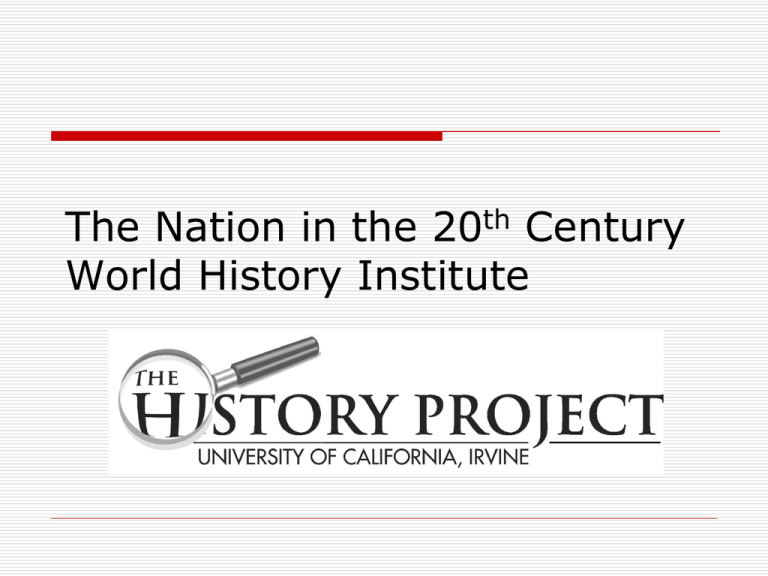Primary vs. Secondary Source
advertisement

The Nation in the 20th Century World History Institute Goals •Improve teacher content knowledge •Increase primary source usage and analysis in world history classrooms •Support teachers to increase implementation of document-based writing •Collaborate to improve writing instruction •Evidence-based curriculum reform Primary or Secondary Source adapted from History Project at UC Davis Definition According to the Library of Congress, primary sources are the raw materials of history — documents and objects which were created at the time under study. They are different from secondary sources - accounts or interpretations of events created by someone without firsthand experience. Video Clip Primary vs. Secondary Some additional thoughts Primary sources are materials produced by people or groups directly involved in the event or topic under consideration. Think of them as first-hand information. Examples of primary sources include eyewitness accounts, speeches, letters and diaries, newspapers and magazines, tax and census data, marriage, birth and death records, works of art, and interviews. Secondary sources Secondary sources construct an explanation of the past based on primary sources and usually in consultation with other secondary sources. The best secondary sources will both report on events in the past as well as generalize, analyze, interpret and/or evaluate. TITLE: Epistola . . . de Insulis Indie nuper inventis (Letter Concerning the Islands Recently Discovered…) “There I found very many islands, filled with innumerable people, and I have taken possession of them all for their Highnesses, done by proclamation and with the royal standard unfurled, and no opposition was offered to me.” CREATED/PUBLISHED by Christopher Columbus (1451-1506) in Rome, 1493. Rare Book and Special Collections Division, Library of Congress Available at: http://www.loc.gov/exhibits/treasures/trt038.html TITLE: Columbus taking possession of the new country. CREATED/PUBLISHED: Boston, U.S.A. : Published by the Prang Educational Co., 1893. 1 print : chromolithograph. Prints and Photographs Division, Library of Congress Available at: http://lcweb2.loc.gov/cgibin/query/i?pp/PPALL:@field%28NUMBER+@band%28cph+3b49587%29%29 On a summer day in 1492, Columbus set sail fro Spain into the uncharted seas with three small ships. After more than a month at sea, crew members sighted land—one of the Bahama islands in the Caribbean. In honor of Christ, Columbus named the land San Salvador, which is Spanish for “holy savior.”…Convinced that he had reached islands off the coast of India, Columbus called the natives “Indians.” --World History: Traditions and New Directions by Peter N. Stearns, Donald R. Schwartz, and Barry K. Beyer published in 1991 by Addison-Wesley Publishing Complexity Sources may be both primary and secondary—depending on your topic or question. Stations Around the room there are 5 stations with sources from different time periods. Your task is to determine if each source is primary or secondary and why. If there are secondary sources, under what conditions could they be considered primary?











